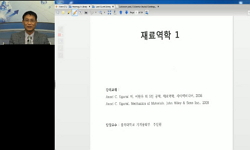While tube bending is a conventional forming technique, it is still used to make curved products for load-bearing members or aesthetically pleasing parts in various manufacturing industries such as automotive, aerospace, and others. Whole or local def...
http://chineseinput.net/에서 pinyin(병음)방식으로 중국어를 변환할 수 있습니다.
변환된 중국어를 복사하여 사용하시면 됩니다.
- 中文 을 입력하시려면 zhongwen을 입력하시고 space를누르시면됩니다.
- 北京 을 입력하시려면 beijing을 입력하시고 space를 누르시면 됩니다.

2차원 튜브벤딩의 단면 변형에 관한 실험적 연구: 인장, 벤딩 시퀀스 및 벤딩 각도 중심으로 = An Experimental Study on Cross-sectional Deformation in 2D Tube Bending: Stretch, Bending Sequence and Bending Angle
한글로보기부가정보
다국어 초록 (Multilingual Abstract)
While tube bending is a conventional forming technique, it is still used to make curved products for load-bearing members or aesthetically pleasing parts in various manufacturing industries such as automotive, aerospace, and others. Whole or local deformation of the final product such as springback, distortion, or local buckling are of interest in metal forming or precision manufacturing. In this paper, the factors affecting the cross-sectional deformation are explored. A 5-axis stretch bending machine was used for two-dimensional bending with extruded AA6082-T4 rectangular tubes. Three different bending sequences were employed: stretch before bending, stretch after bending, simultaneous bending and stretch. Furthermore, by considering both the stretch and bending angle, cross-sectional deformation was also analyzed. It was observed that employing stretch bending techniques can effectively reduce cross-sectional deformation and contribute to overall quality enhancement. Through this study, it was revealed that these factors have an impact on the cross-sectional deformation of the tubes.
동일학술지(권/호) 다른 논문
-
진공점진성형에서 복합공구경로가 차량용 외판부 도어패널의 변형특성에 미치는 영향 분석
- 한국소성∙가공학회
- 윤형원
- 2023
- KCI등재
-
전해액 종류에 따른 준안정 오스테나이트계 스테인리스강의 전해연마 유기 마르텐사이트 상변태에 미치는 영향
- 한국소성∙가공학회
- 채준영
- 2023
- KCI등재
-
냉간 업셋팅 공정에 의한 경사형 볼 그루브를 갖는 내륜의 잔류응력 예측 및 경도 평가
- 한국소성∙가공학회
- 구태완
- 2023
- KCI등재
-
압축시험에서의 배럴링 및 소성발열 직접 측정에 의한 Nimonic 80A 합금의 응력-변형률 선도 보정
- 한국소성∙가공학회
- 강성훈
- 2023
- KCI등재




 ScienceON
ScienceON DBpia
DBpia



